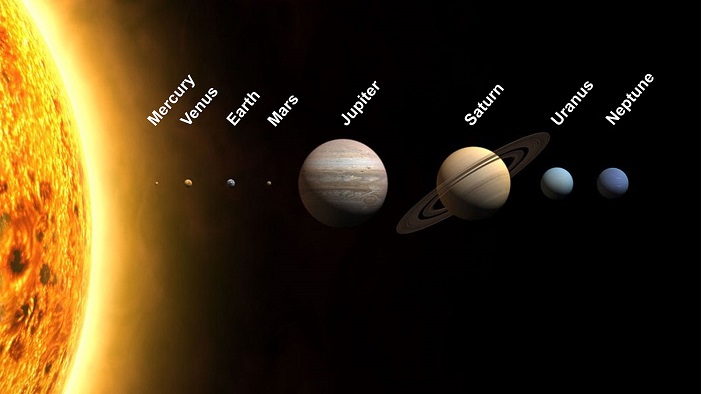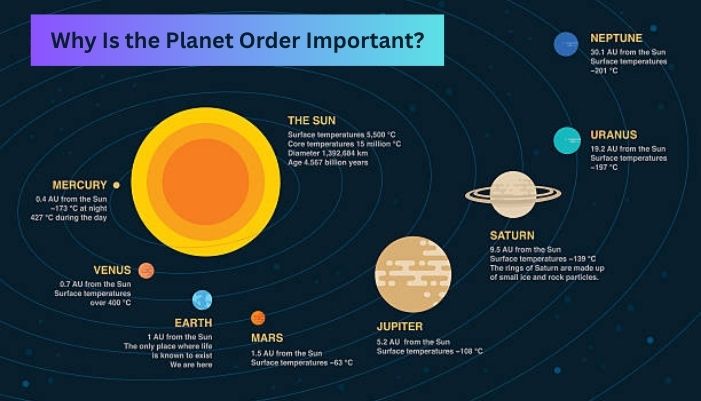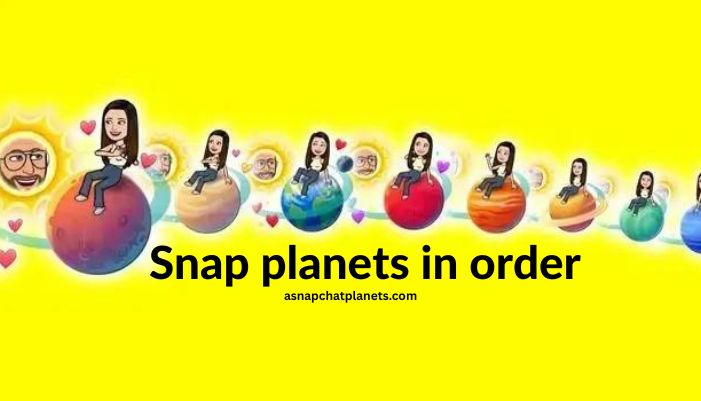Do you ever forget the order of the planets? You’re not the only one! This guide will show you how to snap planets in order using simple tips that are fun and easy to remember.
Let’s make space learning easy—step by step.
What Does “Snap Planets in Order” Mean?
“Snap planets in order” is just a fun way to say remember the planets by their position from the Sun. When we talk about “snapping” them in order, we mean getting the list right—fast and easily.
The 8 Planets in the Right Order

Here are the planets from the closest to the Sun to the farthest:
- Mercury – Small and very hot
- Venus – Bright and cloudy
- Earth – Our home
- Mars – The red planet
- Jupiter – The largest planet
- Saturn – Famous for its rings
- Uranus – Spins on its side
- Neptune – Dark, cold, and far away
Note: Pluto used to be the ninth planet. But now it’s called a “dwarf planet.”
How to Easily Remember the Planet Order
You don’t have to memorize a boring list. Just use a fun sentence to help you recall them.
Try this popular one:
“My Very Educated Mother Just Served Us Noodles.”
Each word’s first letter matches a planet:
- My = Mercury
- Very = Venus
- Educated = Earth
- Mother = Mars
- Just = Jupiter
- Served = Saturn
- Us = Uranus
- Noodles = Neptune
This sentence works like magic! It’s short, easy, and helps you snap planets in order every time.
Why Is the Planet Order Important?

Knowing the planet order helps us understand:
- How close or far each planet is from the Sun
- Which planets are hot or cold
- How long a year is on each planet
- Where space missions go
- How our solar system works
This isn’t just for school—it’s the first step to understanding the world beyond Earth.
Planet Facts Made Simple
Let’s take a quick look at each planet with easy facts:
- Mercury: Smallest planet, very close to the Sun
- Venus: Covered in thick clouds, very hot
- Earth: Only planet with life (so far!)
- Mars: Dry and dusty, with the tallest volcano
- Jupiter: A gas giant, has 80+ moons
- Saturn: Has beautiful rings made of ice
- Uranus: Spins sideways, light blue color
- Neptune: Strongest winds, very far away
Frequently Asked Questions
Q: What’s the easiest way to remember the planets?
A: Use a mnemonic like “My Very Educated Mother Just Served Us Noodles.”
Do the planets ever move out of order?
A: No. Their orbits may change slightly, but the order from the Sun stays the same.
Q: Are there more planets we don’t know about?
A: Some scientists think there could be another big planet far beyond Neptune, but it’s not proven yet.
Q: What is a mnemonic and why is it helpful?
A: A mnemonic is a memory trick—like a short sentence—that helps you remember something. For planets, it makes it easier to recall their order without memorizing long lists.
Q: How many planets are there in total?
A: There are 8 official planets in our solar system. Pluto was the ninth but is now a “dwarf planet.”
Q: Why did scientists remove Pluto from the planet list?
A: In 2006, scientists decided Pluto was too small and didn’t “clear its orbit” like the other planets. So, it became a dwarf planet.
Q: Are all the planets made of the same stuff?
A: No. The four closest planets (Mercury, Venus, Earth, Mars) are rocky. The next four (Jupiter, Saturn, Uranus, Neptune) are gas or ice giants.
Final Thoughts
Learning how to snap planets in order doesn’t have to be hard. With the right trick—like a fun sentence—you can remember them all easily.
Whether you’re helping a child learn or brushing up for fun, this is a great place to start your space journey.
